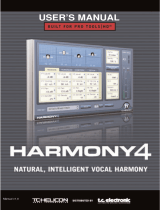
Important safety instructions
Play Acoustic – Reference manual (2014-07-16) 2
1. Read these instructions.
2. Keep these instructions.
3. Heed all warnings.
4. Follow all instructions.
5. Do not use this apparatus near water.
6. Clean only with a dry cloth.
7. Do not block any ventilation openings. In-
stall in accordance with the manufacturer’s
instructions.
8. Do not install near any heat sources such
as radiators, heat registers, stoves, or other
apparatus (including amplifiers) that pro-
duce heat.
9. Do not defeat the safety purpose of the po-
larized or grounding-type plug. A polarized
plug has two blades with one wider than
the other. A grounding-type plug has two
blades and a third grounding prong. The
wide blade or the third prong is provided for
your safety. If the provided plug does not fit
into your outlet, consult an electrician for
replacement of the obsolete outlet.
10. Protect the power cord from being walked
on or pinched, particularly at plugs, con-
venience receptacles, and the point where
they exit from the apparatus.
11. Only use attachments/accessories speci-
fied by the manufacturer.
12. Use only with a cart, stand, tripod,
bracket, or table specified by the
manufacturer, or sold with the ap-
paratus. When a cart is used, use
caution when moving the cart/apparatus
combination to avoid injury from tip-over.
13. Unplug this apparatus during lightning
storms or when unused for long periods
of time.
14. Refer all servicing to qualified service per-
sonnel. Servicing is required when the ap-
paratus has been damaged in any way,
such as power-supply cord or plug is dam-
aged, liquid has been spilled or objects
have fallen into the apparatus, the appara-
tus has been exposed to rain or moisture,
does not operate normally, or has been
dropped.
Caution
You are cautioned that any change or modifi-
cations not expressly approved in this manual
could void your authority to operate this equip-
ment.
Service
►
All service must be performed by qualified
personnel.
►
There are no user-serviceable parts inside.
Warning
►
To reduce the risk of fire or electric shock, do
not expose this apparatus to rain or moisture
and objects filled with liquids, such as vases,
should not be placed on this apparatus.
►
This apparatus must be earthed.
►
Use a three wire grounding type line cord like
the one supplied with the product.
►
Be advised that different operating voltages
require the use of different types of line cord
and attachment plugs.
►
Check the voltage in your area and use the
correct type.
Voltage Line plug according to standard
110 to 125V UL817 and CSA C22.2 no42.
220 to 230V CEE7 page VII, SR section 107-
2-D1 / IEC83 pageC4.
►
This equipment should be installed near the
socket outlet and disconnection of the device
should be easily accessible.
►
To completely disconnect from AC mains, dis-
connect the power supply cord from the AC
receptacle.
►
The mains plug of the power supply shall re-
main readily operable.
►
Do not install this device in a confined space.
►
For use at an altitude of 2000m or lower.
►
Do not open the unit – risk of electric shock
inside.





















